My appointment at Gargas was for early in the afternoon, so I was able to have a pleasant and leisurely breakfast. In place of the standard French baguette, there was a much more chewy local loaf known as quatre-banes, which I thought superb, perfect with the fresh country butter and jam. The cuisine of Hautes-Pyrénees, like many other aspects of its culture, is more closely in tune with that of the Basque Country and Catalonia than with northern France (and indeed, the slang expression nordiste is used by the locals with obvious disdain). Beans and spicy sausages, country soups, hard rather than soft cheeses, bread that you can get your teeth into. After breakfast, I still had plenty of time to reach the caves on foot. From Lombrès, I walked down the road to the village of Aventignan (about three times larger than Lombrès), then along a minor road to the cave’s reception center, little more than 4km.
Only two cars passed me, and there was nothing much along the way but empty fields until the hills and forest started. The weather was cool and overcast. Often, when I’m walking, music pops into my head in surprisingly complete form, and this time it was the Shepherd’s Song from Canteloube’s Chants d’Auvergne, sung in Old Occitan, the language of Southern France before it was conquered, re-educated, and regimented by the nordistes. The dialect of the Auvergne was considerably different from the Gascon spoken in this region, but it neverltheless puts across the Southern mood:
As gaïré dè buon tèms?
Dio lou baïlèro lèrô,
Lèrô lèrô lèrô lèrô baïlèro lô.
Pastré lou prat faï flour,
Li cal gorda toun troupel.
Dio lou baïlèro lèrô,
Lèrô lèrô lèrô lèrô baïlèro lô.
Pastré couci foraï,
En obal io lou bel riou!
Dio lou baïlèro lèrô,
Lèrô lèrô lèrô lèrô baïlèro lô.
(“Shepherd across the river, your work there is hard. Look, the meadows here are in bloom. You should watch your flock on this side…. Shepherd, the water divides us, and I can’t cross it”). Nothing at all like French. Incomprehensible to all but a few surviving speakers of the Old Tongue, but the melody conveys such a wonderful sadness and yearning that it would be understood emotionally in Tokyo. In fact, it resembles many Japanese folk melodies.
I soon reached the reception center, which boasted a café, which was closed, and a small museum. It was here that I confirmed my reservation. A staff archaeologist was busy explaining how stone-age tools were used to some children, so I chose to walk up to the cave entrance and wait there for Alexandre Gay, who was to be my guide into another world.
Now is the time to explain why I had picked this particular cave. Others are more famous, more spectacular, and easier to get to.
Gradually, most of the prehistoric art caves are being closed off from public view. The mere presence of human beings is destroying the cave art, because the increase in the level of carbon dioxide caused by human breathing promotes the growth of a nasty green slime of bacteria and algae on the cave walls. The famous art of Lascaux and Chauvet have been nearly destroyed, and these caves are now sealed off. The French government has spent a fortune creating replica “caves” for tourists. But I have little interest in viewing these replicas. Good professional photography and the appropriate technical reports will give me more information, and no replica can provide the reality of experience I seek. Gargas is not one of the more famous ones, and it is not conveniently located. Unlike many of the caves, its existence has been known for centuries, and in fact it has visitor grafitti from centuries past. Most of all, it has only a small amount of the animal art that people associate with such caves.
But Gargas specifically has fascinated me since I ran across Claude Barrière & Ali Sahly’s L’art pariétal de la Grotte de Gargas in a two-volume English translation published by Oxford’s British Archaeological Reports. In the many years since I read it, the cave has haunted me. There are many ways in which it is profoundly different from other prehistoric cave sites. First, and formost, are its hands. Hand stencils, formed by placing a hand against a stone surface and then spraying pigment onto it by controlled spitting — a slow process, but very precise — are scattered throughout Europe, and can also be found in Africa, Indonesia, Australia, and South America. But Gargas has far more than any other site. In fact, it accounts for half of all the hand stencils in Europe. The significance of the hand-stencils is unknown. They exhibit great peculiarities. Many of them appear to have fingers missing. This triggered various theories based on anthropological parallels, such as the custom in some places of chopping off a finger to signify mourning of a deceased loved one. Others suggested that fingers were being lost to frostbite. But the number of stencils at Gargas showing missing fingers far exceeds the probabilities of these kinds of explanations. Fortunately, someone eventually demonstrated that one needs only to bend a finger underneath one’s hand while spraying the paint to achieve the “missing finger” effect. Hand stencils of this type are much, much older than most of the figurative art that is known in prehistoric caves. The famous animal paintings at Lascaux were made around 20,000 years ago, and are associated with the Solutrean archaeological culture [archaeologists designate similar complexes of artifacts as “cultures”, but this should not be taken to mean a “culture” as necessarily an ethnic entity]. The art at Altamira is between 17,000 and 13,000 years old, and is associated with the Magdalanean culture, and the images at Trois-Frères are pushing to the edge of the Neolithic. Gargas contains some animal art, and it too dates from around 15,000 years ago and is identifiably Magdalanean. But the hand-stencils at Gargas date from more than 27,000 years ago, and are associated with the Gravettian culture. This was before the last Glacial Maximum. It is important to remember that when the best representational art was made at Gargas, the artists were near to work done by artists who were nearly as far back in time from them as they are from me.
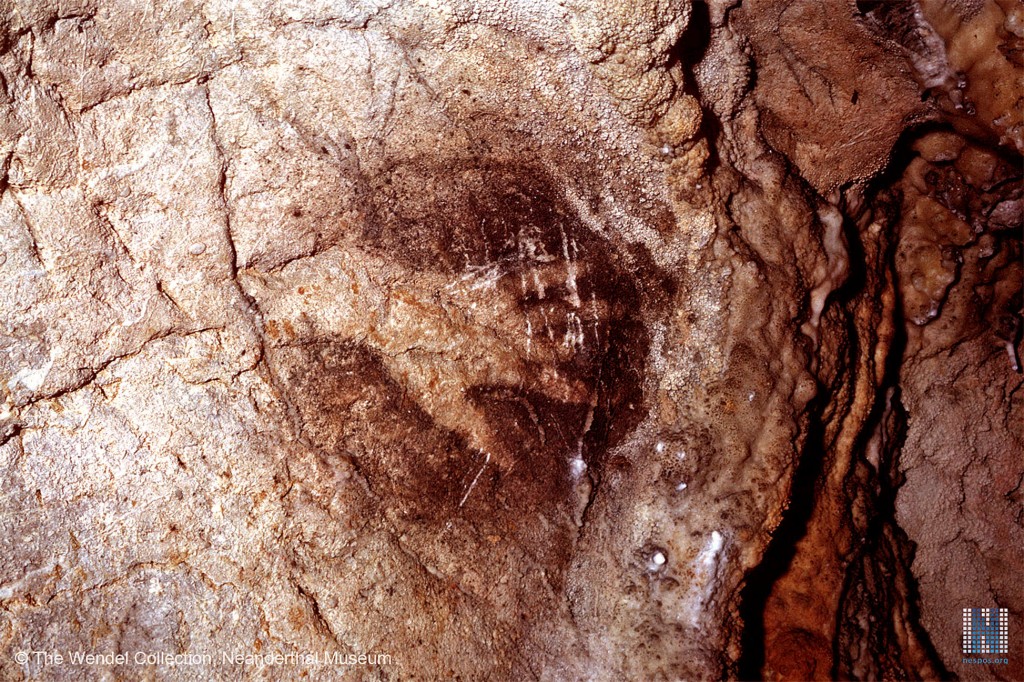
Visitor photography is not permitted at Gargas. This and the next photos come from technical papers
The hand-stencils at Gargas are very similar to ones found across the planet in Sulawesi, Indonesia. Recent re-dating using “U‑series” Uranium/Thorium dating techniques have confirmed that these were made 39,900 years ago. As in Europe, Asian hand-stencils tend to predate animal art by several thousand years at the same locations. The idea that art “originated” in Europe is long abandoned from serious consideration. Parietal art in Australia, Asia, and Africa can be dated to the same time depth, or earlier.
Another thing that is unique about Gargas: It is the only European cave in which art co-exists with clear signs of human habitation. In the famous caves in the Dordogne, for instance, there are caves nearby that were inhabited, but the art-caves were functionally separate entities. At Gargas, all the art is inside the cave, well beyond the limits of natural light, and had to have been made and seen by portable illumination (probably fat-lamps similar to the ones used by the Innuit), but there was consistent, long-term habitation at the cave mouth. Why Gargas should be unique in this way remains a mystery.
A small group gathered below the cave entrance, at a place with a fine view of the valley below. M. Gay arrived, and after a brief talk led us into the upper cave. It is now only accessible through a locked door. For about an hour, Alexandre led us through about 500 metres of galleries. The upper cave is narrow and winding, but does not require any special skill to pass through. It contains some of the figurative art. The natural features of this cave, including a variety of rock pillows, stalagtites and stalagmites, created an appropriate atmosphere of suspense as we progressed. We came at last to an artificial tunnel that had been constructed to connect the upper cave with the lower.
The lower cave is much bigger and wider and contains the two main chambers and a small side-chamber called the Chambre du Camarin. Most of the cave art is here, including all of the hands. There seem to be at least three phases of development in the figurative art. Animals represented include Bovidae, Bison, Mammoth, Horses, Ibex, and possibly birds. For the most part, it consists of etchings into the stone, sometimes combined with painting. This is the sort of thing that does not come off well in photographs, and only seeing the real thing in situ conveys its artistic quality. I was not prepared for the emotional power of this art, having long assumed that it must be inferior to the famous stuff. At one point, we were asked to crouch on the ground to look up at one engraving that could only be viewed from this angle.
But is the hands I was most interested in. They had come to represent, for me, a direct connection to other human beings across a vast gulf of time. And despite all the preparation for the event, the reality of it drained me emotionally. They are not merely pretty, but shocking, in something like the way that the ghostly shadows of vaporized humans on the walls of Hiroshima are shocking. These are not artifacts, like the animal drawings, the mobile art, or the lithic finds. They are shadows of human beings, of real people who thought and felt and loved and hated and cried and died. Their presence in the cave was palpable, as if they were portraits of my own family on a bedroom dresser. And these people struggled to stay alive in a way perfectly familiar to me — the hunting of large mammals in a cold climate, much like the world that still exists in northern Canada. It is not very long since I spoke and shared a whiskey or two with people who would have recognized the inhabitants of Gargas as “folk just like us.”
Gay has devoted all his life to the Gargas caves. He had an appointment to attend to, so we agreed to meet on the following day at his home pour un apéritif. He conveniently lives in Loubrès, a short walk from the fromagerie. It was a conversation I eagerly looked forward to.
But what to do next? It was still mid-afternoon, and I might as well see some of the countryside. M. Uchan had mentioned that there was a medieval church or some significance, and some roman ruins another four kilometers to south. This would put me in the valley to east of the one Lombrès was in, separated by a wall of steep, forested hills. The topographical maps indicated that there was a footpath over the hills, in fact a fragment of the medieval trail of pilgrimage known as El Camino de Santiago. There seemed to plenty of time to find this trail, cross the hills, find the Roman bridge that was supposed to cross the little river Larise, and then make my way back to Lombrès.
The best-laid schemes o’ mice an’ men gang aft agley.
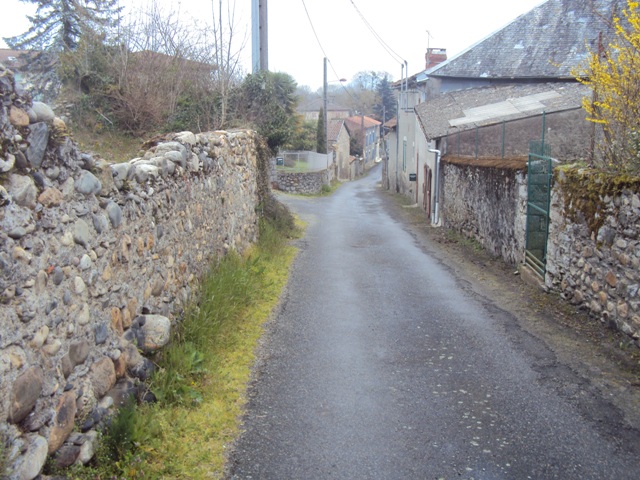
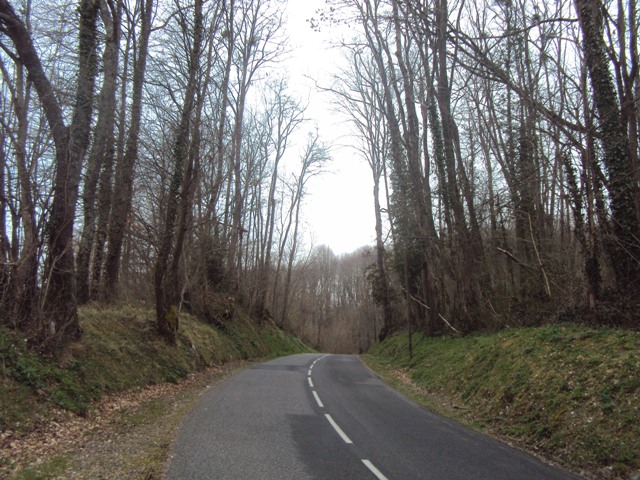
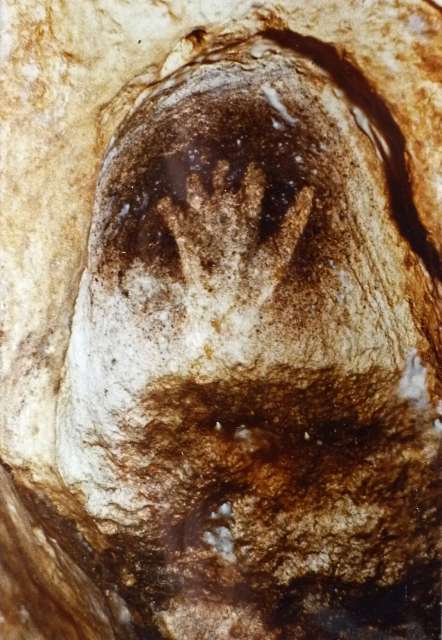
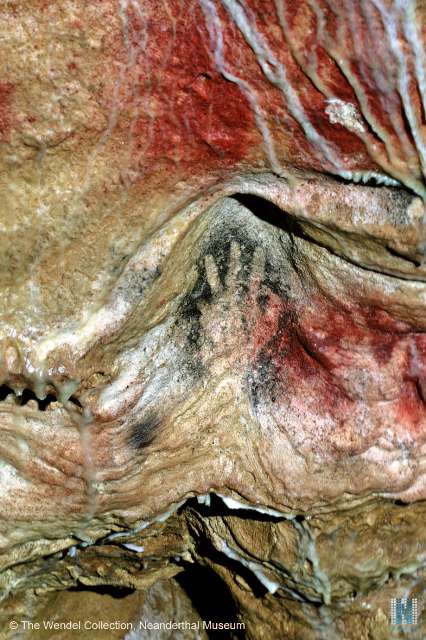
0 Comments.